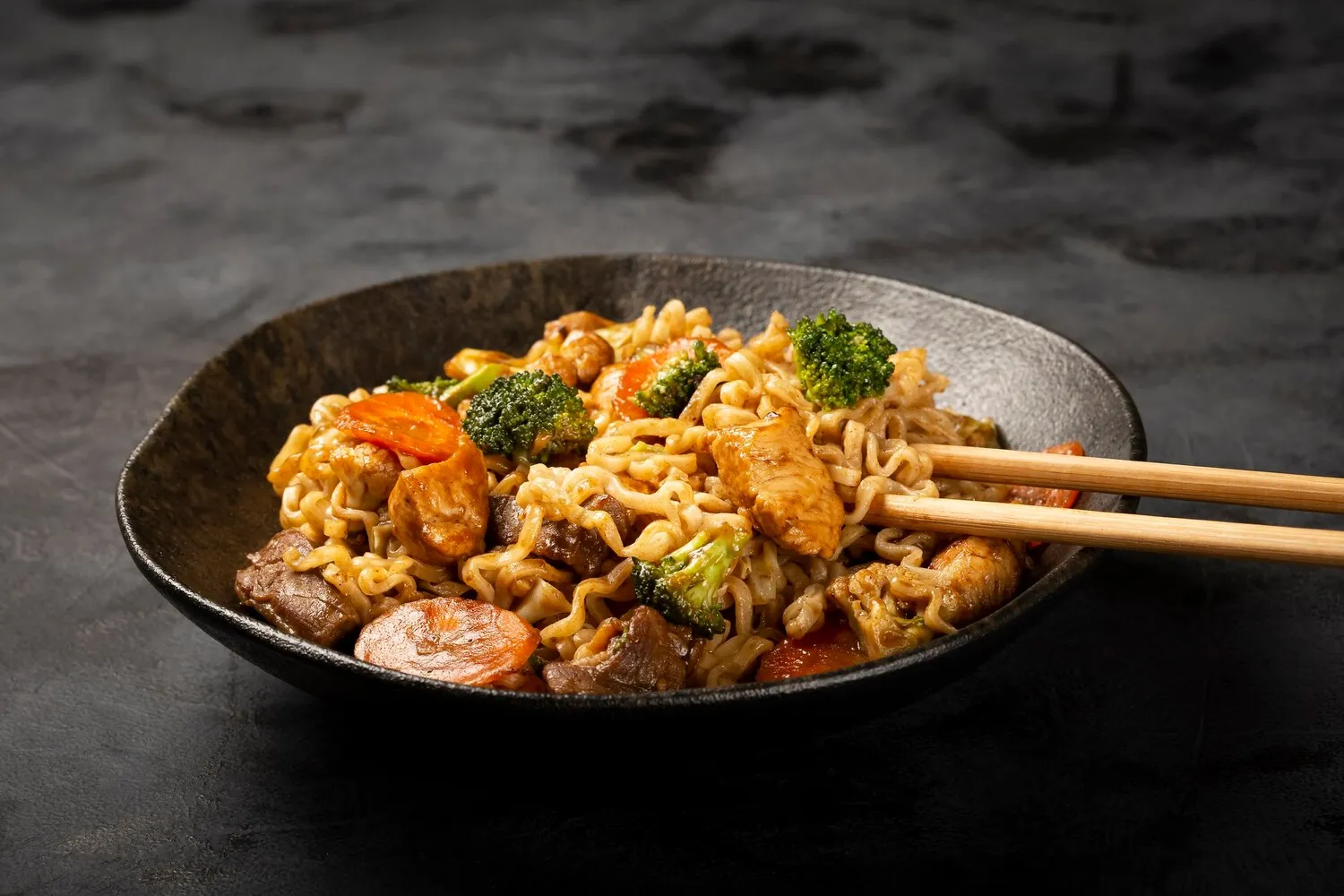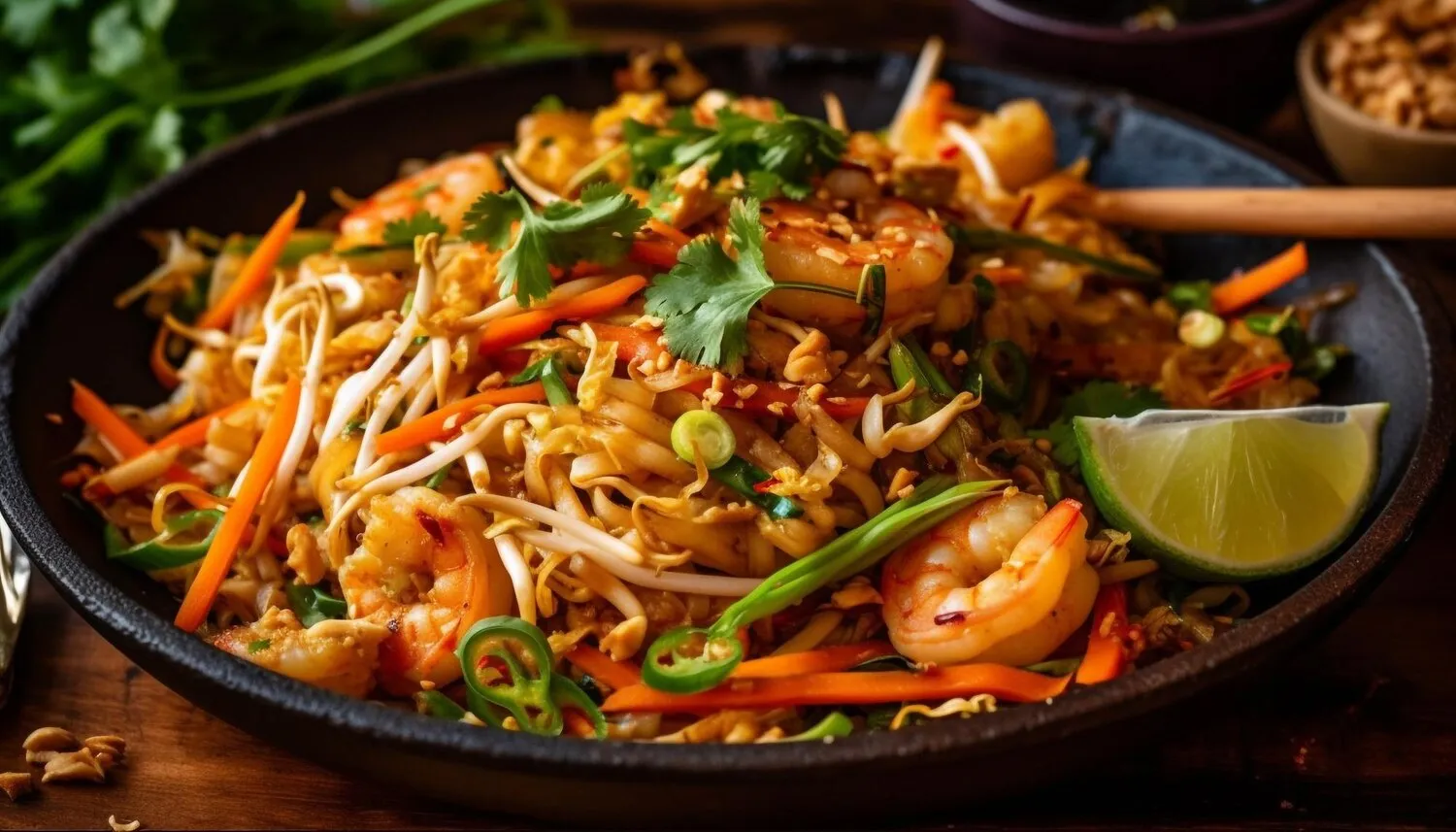
Yakissoba
Stir-fried noodles with vegetables and meat (often chicken or beef).
Nutrition Facts
* The % Daily Value (DV) tells you how much a nutrient in a serving of food contributes to a daily diet. 2,000 calories a day is used for general nutrition advice.
Hatsuki
Yakisoba's origins are traced back to Chinese chow mein, introduced to Japan. Over time, it evolved into a distinct Japanese dish, particularly after World War II, becoming a popular and affordable street food.
Yakisoba is deeply embedded in Japanese culture, particularly as a festival food and a common dish served at street stalls and community events.
Festival Food
Yakisoba is a staple at Japanese festivals (matsuri), often sold from yatai (food stalls). Its portability and relatively quick preparation make it ideal for these events.
Street Food
Yakisoba is a popular street food throughout Japan, readily available from vendors and small eateries.
Home Cooking
Yakisoba is also frequently made at home as a quick and easy meal. Pre-packaged yakisoba noodles and sauce are widely available in supermarkets.
Pan-fried Noodle Sandwiches
In some regions, particularly in Japan's Iwate Prefecture, yakisoba is used as a filling for a bread roll, to create a Yakisoba-pan.
Yakisoba is characterized by a savory and slightly sweet sauce, complemented by the umami from the meat and the freshness of the vegetables.
The primary flavor profile comes from the yakisoba sauce, which typically includes Worcestershire sauce, soy sauce, oyster sauce, ketchup, and other seasonings. This creates a complex sweet, savory, and tangy taste. The stir-fried noodles absorb the sauce, while the pork (or other meat), cabbage, onions, and carrots contribute their own flavors and textures. Garnishes like aonori (dried seaweed flakes), beni shoga (pickled ginger), and katsuobushi (dried bonito flakes) add further layers of flavor.
Noodle Preparation
Loosen the noodles before stir-frying to prevent clumping and ensure even cooking. If the noodles are dry, you may parboil them briefly before frying.
Sauce Adjustment
Adjust the amount of yakisoba sauce to your liking. Taste as you go and add more for a bolder flavor.
Meat Choice
Pork belly is a classic choice for yakisoba, providing a rich and savory flavor. However, chicken, beef, or even seafood can be used as alternatives. Adding thinly sliced meat ensures even cooking and optimal integration into the dish.
Vegetable Variety
While cabbage, onions, and carrots are common, feel free to experiment with other vegetables like bell peppers, mushrooms, or bean sprouts to enhance the dish's texture and flavor.
Proper Stir-Frying
Ensure your wok or frying pan is hot before adding ingredients. Stir-fry quickly and constantly to prevent sticking and achieve a slightly charred flavor.
Explore additional Noodles dishes and restaurants
Explore NoodlesDiscover top dining spots and culinary experiences in Rio Preto.
Explore Rio PretoLearn more about the food culture, restaurant scene, and culinary heritage of Brazil.
Explore Brazil
